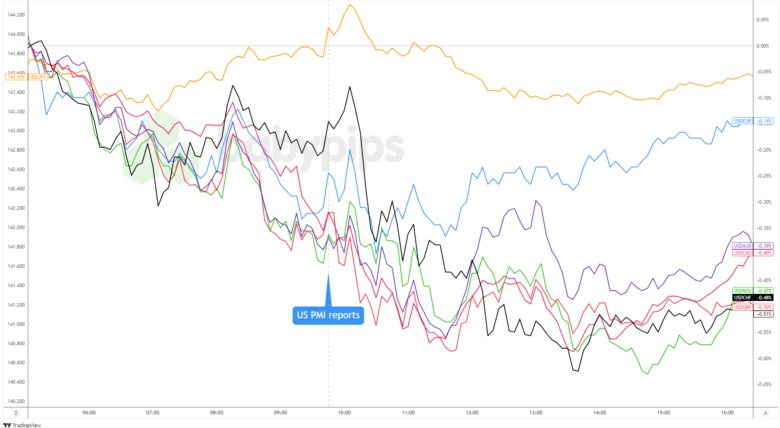
Data from S&P Global showed the continued growth disparities between the manufacturing and services sector in September.
- Flash manufacturing PMI for September: 47.0 (48.6 forecast, previous reading downgraded from 48.0 to 47.9)
- Flash services PMI for September: 55.4 (55.3 forecast, 55.7 previous)
The goods-producing manufacturing sector contracted further from 48.6 to 47.0, marking its third consecutive decline and its steepest deterioration since June 2023.
New Orders – which fell at the fastest rate since December 2022 – made the largest negative contribution, followed by Employment falling at a pace not seen since the June 2020 pandemic period.
Meanwhile, the services sector expanded by another month but decelerated slightly from 55.7 to 55.4.
The report noted the economic and demand uncertainty around the U.S. Presidential Elections, which led to deteriorating confidence and slower hiring in the services industry.
Link to S&P Global U.S. Flash Composite PMI for September
The Composite PMI report highlighted that average prices for goods and services rose at the fastest rate since March, with selling price inflation jumping to six-month highs for both industries as input costs increased.
Chris Williamson, Chief Business Economist at S&P Global Market Intelligence, also noted:
“Despite the PMI indicating a further deterioration of the hiring trend in September, the FOMC may need to move cautiously in implementing further rate cuts.
Prices charged for goods and services are both rising at the fastest rates for six months, with input costs in the services sector – a major component of which is wages and salaries – rising at the fastest rate for a year.”
Market Reactions
U.S. dollar vs. Major Currencies: 5-min

Overlay of USD vs. Major Currencies Chart by TradingView
The U.S. dollar, which had been trending lower since the London session, briefly spiked against safe-haven currencies like the JPY and CHF, as well as popular pairs like the EUR, AUD, and NZD after the release. One possible factor? The continued growth in the services sector.
But it didn’t take long for markets to factor in weaker employment prospects, stubbornly high prices, and uncertainty surrounding the upcoming Presidential Election. The Greenback extended its losses, hitting new intraday lows around the London close, before leveling off or staging a slight recovery against its major rivals.
By the end of the day, the dollar was in the red across the board, with the weaker euro being the only exception.


